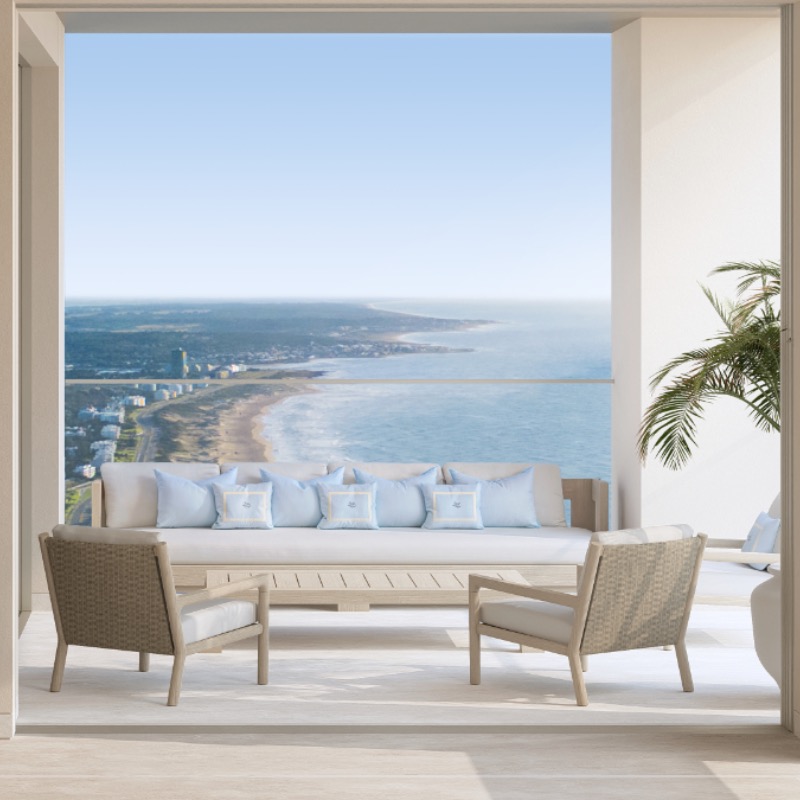Fair Trade
Pre-pandemic, gallerists and collectors alike were so exhausted from the global calendar of fair-hopping that someone actually coined the word “fair-tigue”—and the fact that this poorly conceived term entered the art-world lexicon is telling of how prevalent the emotion was.
Well, there’s nothing like two or three years of sheltering in place to remind culture vultures that there is a world of opportunity out there—even if it is taking place in fluorescent-lit convention centres. It’s those same exhausted travelling collectors who keenly booked up tickets to the Basels and the Friezes, as well as to new fairs that were mushrooming across the globe in art-capital hopefuls.
Nowhere was that more true than in Asia, where fairs began popping up to great fanfare. While the debut of Frieze in Seoul in late 2022 was the big show pony that had people talking—in particular, whether Seoul would overtake Hong Kong as Asia’s primary art hub—November 2022 saw the launch of Art Week Tokyo, followed by Art SG in January 2023, and Tokyo Gendai just half a year later.
“We’re really seeing the pluralisation of art hubs in Asia,” says Erica Siu, senior vice president at Sutton, whose firm represents Art Basel, Taipei Dangdai, and Art SG, as well as Art Week Tokyo and Gallery Weekend Beijing. “What you see in the first edition of a new art fair is only the beginning. As the overseas galleries coming in to show get to know the idiosyncrasies of each market and understand local collectors’ tastes, you’ll see the fairs get even better. The curation will grow more targeted and sophisticated, and sales performance will increase as well. The same goes for various festivals that can shed light on the local art scene, evolving year after year to attract both local and overseas audiences.”
This can already be seen in Seoul, which in September 2023 welcomed everybody who was anybody from across the Asian region—in art or otherwise. Our Week, an emerging satellite fair, also joined the fray, launching during the Frieze fair period with booths from Hong Kong galleries Kiang Malingue, PHD Group, and Flowers Gallery.
Enrico Polato, whose gallery, Capsule Shanghai, does six or seven shows per year in its cosy, residential-style space in the Chinese city’s French Concession area, counted that by the time 2023 ends, they will have taken booth space at 12 global fairs, including Art SG, Hong Kong’s Art Basel, Taipei Dangdai, Frieze Seoul, and West Bund—in effect, staging some 12 off-campus exhibitions, as Polato has a practice of creating one- or two-artist presentations at fairs, instead of the hodgepodge of bestsellers that some participating galleries prefer.
“What we’re trying to do is to open up possibilities into new markets,” Polato says of the rationale behind taking part in these fairs, despite the hefty cost and sometimes uncertain returns. “And the only way to do it is just to be on the spot. What I find challenging is that you really have a short time to connect with a large number of people, and the pace of a fair is very fast, so it is sometimes frustrating. But the results come in the long run. I had cases where people reached out after the fair because we had a show with the artists they saw at the fair, and there was some sort of visual memory, and so they reached out for information about the new body of works.”
Ultimately, it’s revenge travel with a purpose—but if it ups the game and diversifies the market in Asia’s art capitals, then we’re all for it.

Auction Debut
Bonhams
Mask 2000 No. 3 by Zeng Fanzhi
This special Zeng Fanzhi work was the headline lot at the “Rediscovery: Manfred Schoeni’s Legacy” sale in May 2023, comprising works from the personal collection of the late art dealer and collector who died tragically in 2004 and was known as one of the early champions and patrons of Chinese art, contributing to its meteoric rise in the early 2000s. Acquired directly from the artist’s studio, the fresh-to-market canvas made it onto the block at Bonhams with a high estimate of HK$25 million before closing at a respectable HK$24.7 million; a portion of the painting’s proceeds was earmarked for the Hong Kong Cancer Fund.
This large piece from the Mask series, besides representing a key trope in Chinese contemporary art of its time, showcases a masked figure in a Western-style suit accompanied by a bulldog, capturing a poignant era in China’s history and acting as a marker of globalisation and the rapid modernisation happening in the country during that period.

Contemporary
Phillips
Lookin’ For a Treasure by Yoshitomo Nara
The work of Japanese artist Yoshitomo Nara is a familiar sight at auctions, and his so-called “Nara girls” regularly top auction records, but the sale of this piece for a cool HK$83.8 million is a strong reminder to look deeper at the nuance of each seemingly similar work. For starters, Nara canvasses of girls dressed in yellow are rarer within the artist’s oeuvre—they feature in fewer than 20 works before 2000. (Meanwhile, ladies in red or blue are three or four times more common, and so the bulk of Nara’s record-breaking sales at auction tend to feature yellow-clad youngsters.)
Moreover, the year that Lookin’ for a Treasure was painted also marked the beginning of the artist’s transition to a more delicate and painterly aesthetic—the style he is best known for today. Lookin’ for a Treasure last appeared at auction in 2011, selling for HK$4.2 million, representing an increase in value of over 20-fold in the last 12 years.

Abstract
Sotheby’s
River at Dusk by Matthew Wong
Matthew Wong’s death by suicide in 2019 ignited an auction-market frenzy that has yet to abate, if the sale of this work is any indication. The Canadian-born artist of Chinese descent—who was on the autism spectrum, had Tourette’s syndrome, and suffered from depression for much of his adult life—spent many of his formative years in Hong Kong and exhibited both here and in New York, with shows that were critically lauded from the start.
His style of painting—using saturated hues, dots, and dabs—carry vibrance and melancholy in equal measure, synthesising inspiration from many of the great painters of the world, but in a visual language both authentic and unique. River at Dusk in particular was created a year before the artist’s passing and hit the block a mere two years after fetching a record breaking HK$37.8 million in December 2020—this time, it achieved a hammer price of HK$52.3 million.

Art Fair
Art Basel Hong Kong 2023
If we had to choose a single moment pinpointing Hong Kong’s return to glory following the strict travel restrictions that ruled for most of 2022, it was Art Basel. After all, the unofficial slogan of the fair—and the refrain of most gallerists, local or otherwise—was “Hong Kong’s back,” and indeed it was, with telltale signs across social and financial aspects. Art parties were plentiful (unmasked and oversubscribed) while sales were brisk. Among the top-end primary-market sales were pieces by Mark Bradford, Roni Horn, and George Condo by Hauser & Wirth, an Elizabeth Peyton by David Zwirner, and two Alex Katz paintings by Gladstone Gallery.

Ceramics
Christie’s
Yangcai Reticulated and Rotating “Dragon Boat” Vase
Considered the most iconic of the Qianlong imperial ceramics, the zhuanxinping—rotating vases—are all the more precious for their rarity. Created in the mid- to late 1700s at the behest and taste of the Qianlong Emperor, this specimen features a lantern shaped outer body carved with four open-worked and interlocked ruyi-shaped panels set in an enamelled latticework backdrop, with a detachable waisted neck that is flanked by ornate handles shaped as dragons. Behind the latticework on the body of the vase is an inner cylindrical vessel, featuring festive scenes from a traditional dragon-boat race, with rowers and spectators dotting the intricate landscape. Turning the neck of the vase allows the body to rotate accordingly so that the interior artwork can be examined through the reticulated portion. This stunning piece had a hammer estimate of up to HK$30 million, finally selling for just over HK$40.3 million.

Exhibition
M+
Yayoi Kusama: 1945 to Now
Kusama’s pumpkins are by now so ubiquitous a trope that you’d think the art world would be over the “Queen of Dots,” but this intriguing artist’s oeuvre is so diverse and complex that to do so would be to overlook a boundary-breaking career that is so much more than a spotted vegetable (that said, said pumpkins continue to smash auction records as we speak).
This survey show of Japanese artist Yayoi Kusama’s practice delivered on both commercial and critical fronts, deftly balancing the technicolour dreamworld that the public sees at first glance with the intricacies of the artist’s various phases and inner universe, from her psychedelic, wearable phallic soft sculptures to her avant-garde New York performative work, as well as the more meditative visual musings arising from her hallucinatory visions.
Besides offering a more considered look into a storied artist, Yayoi Kusama: 1945 to Now acts as a shining example of why Hong Kong’s own world class art museum was well worth the wait.

Gallery Show
Kwai Fung Hin
Worlds Beyond Reality—Monet’s Legacy
Few local galleries could attempt to mount a show such as Worlds Beyond Reality—Monet’s Legacy, but Kwai Fung Hin, operating from its new location in Tai Kwun, did it flawlessly and elegantly. In this exhibition, Claude Monet’s Pivoines (1887)—executed during his early years in Giverny and later referred to by the artist himself as “my most beautiful work of art”—is placed in conversation with the works of assorted artistic greats, including Zao Wou-ki, Lalan, and Chu Teh-chun, along with David Hockney, Shara Hughes, Ziad Dallol, and Myonghi Kang. The juxtaposition of these artists, hailing from East and West, through modernist and contemporary eras, are proof of the Impressionist artist’s enduring legacy.









